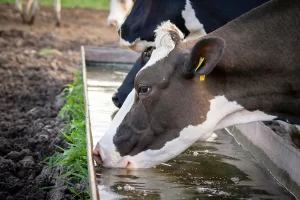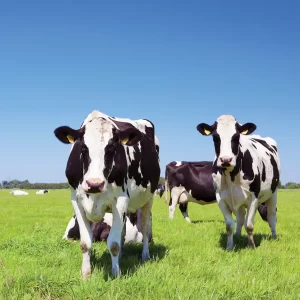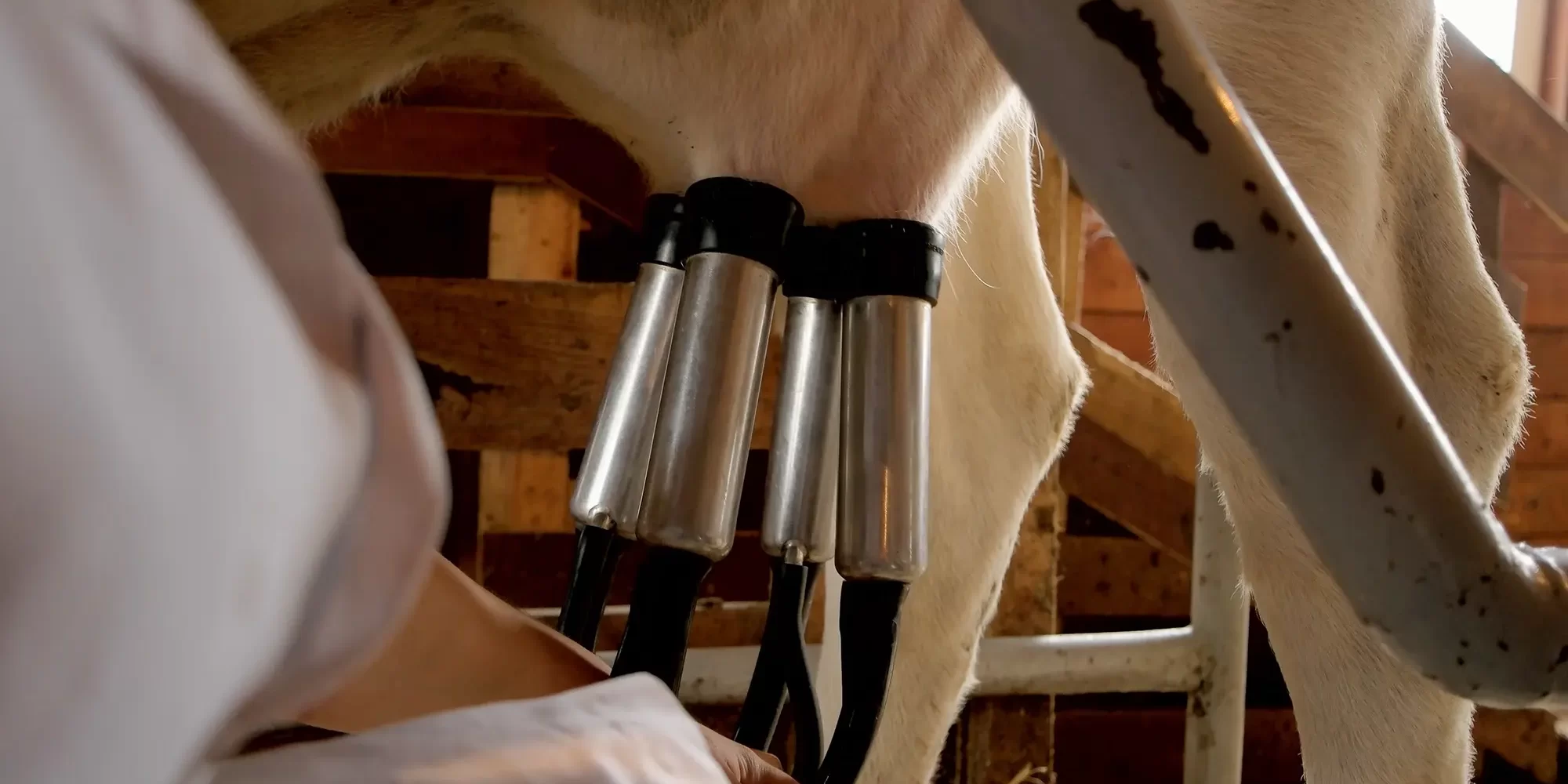In dairy farming, the quality of water plays a pivotal role not only in the health of the cows but also in the overall quality and quantity of milk produced.
Understanding the intricate relationship between water quality, somatic cell count, milk quality regulations, and the innovative use of Chlorine Dioxide is essential for dairy farmers aiming to enhance their productivity and meet stringent industry standards.
Somatic Cell Count and its Impact on Milk Quality
Somatic cells are white blood cells that can indicate the health of a cow’s udder. An elevated somatic cell count (SCC) in milk is often linked to udder infections, adversely affecting milk quality. Regulatory bodies, such as the Pasteurised Milk Ordinance (PMO), set standards to ensure the safety of Grade A milk for human consumption.
In 1999, the European Community (EU) imposed stringent regulations, banning the importation of US-produced milk due to elevated somatic cell counts. This move highlighted the importance of meeting global standards in the dairy industry.
The Role of Water Quality in Milk Production
 Meeting these regulatory standards demands a comprehensive approach. While many factors contribute to milk quality, water quality is a fundamental aspect often overlooked. The presence of contaminants or bacteria in water can impact the health of cows and, subsequently, the quality of milk.
Meeting these regulatory standards demands a comprehensive approach. While many factors contribute to milk quality, water quality is a fundamental aspect often overlooked. The presence of contaminants or bacteria in water can impact the health of cows and, subsequently, the quality of milk.
Traditional water treatment methods, such as chlorination, have limitations in addressing specific challenges like biofilm or slime growth in water systems. This is where Chlorine Dioxide emerges as a revolutionary solution, offering unparalleled benefits in improving water quality and, consequently, milk production.
The Role of Chlorine Dioxide in Milk Production
1. Superior Disinfection with Chlorine Dioxide: Chlorine Dioxide is a powerful biocide that outshines traditional chlorine in water treatment. It efficiently penetrates and removes biofilm or slime, ensuring the integrity of water distribution systems. Unlike chlorine, which often fails to inhibit slime growth, Chlorine Dioxide provides a comprehensive solution, addressing specific disinfection tasks.
2. Increased Milk Production: Studies have shown that Chlorine Dioxide positively influences milk production. In a dairy operation with 970 cows, the introduction of Chlorine Dioxide resulted in a notable increase in the volume of water consumed by the cows. This increase, in turn, led to a rise in milk production per cow without the use of bovine growth hormones. Clean water, treated with Chlorine Dioxide, directly impacts the health and productivity of the herd.
3. Cost-Effective and Safe: Chlorine Dioxide offers a cost-effective and safe alternative to traditional water treatment methods. It achieves the same disinfecting power as chlorine but at significantly lower dosage rates. The safety and cost advantages make Chlorine Dioxide the preferred choice for dairy farmers looking to enhance water quality.
High Quality Milk Production with Scotmas Solutions
 Scotmas, a pioneer in water treatment solutions, offers a range of innovative products, including Chlorine Dioxide-based systems, designed to address the unique challenges faced by dairy farmers. By incorporating Scotmas solutions, dairy farmers can not only meet but exceed regulatory standards, ensuring the production of high-quality, safe milk.
Scotmas, a pioneer in water treatment solutions, offers a range of innovative products, including Chlorine Dioxide-based systems, designed to address the unique challenges faced by dairy farmers. By incorporating Scotmas solutions, dairy farmers can not only meet but exceed regulatory standards, ensuring the production of high-quality, safe milk.
In conclusion, the impact of water quality on milk production is undeniable. Dairy farmers looking to enhance productivity and meet regulatory standards must prioritise water quality management. The adoption of Chlorine Dioxide-based solutions, such as those provided by Scotmas, not only ensures superior disinfection but also contributes to increased milk production, ultimately shaping a healthier and more productive dairy operation. Please contact Scotmas for personalised guidance on implementing these solutions or further inquiries about Scotmas’ innovative products and services.






